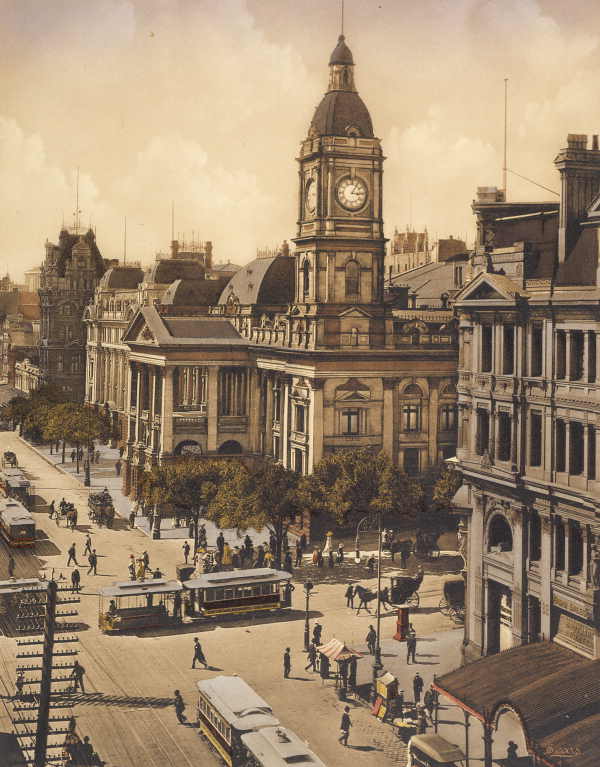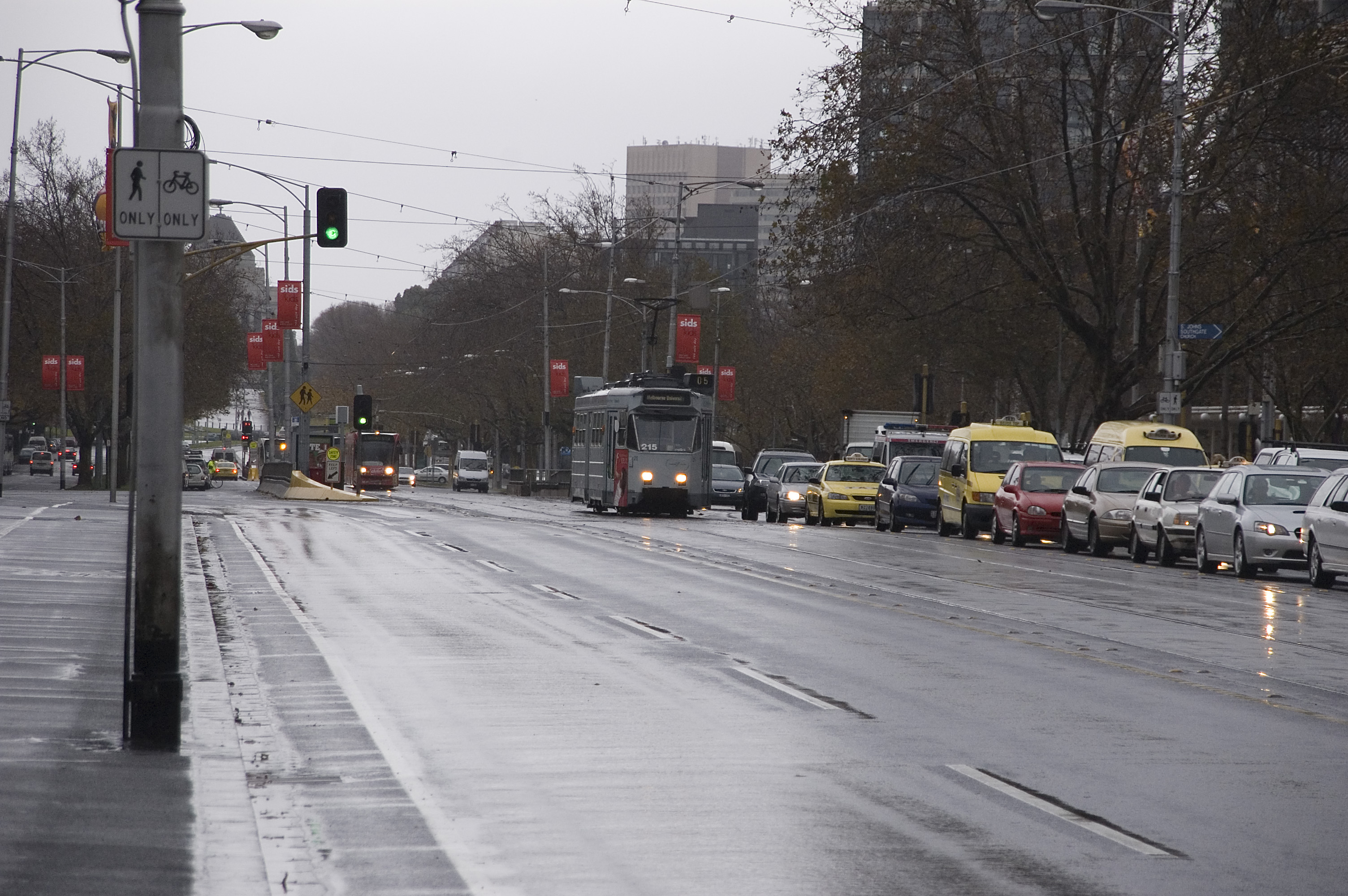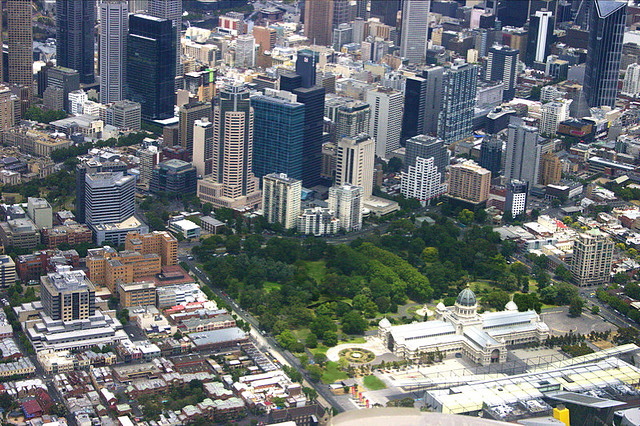|
Marvellous Melbourne
''Marvellous Melbourne: Queen City of the South'' is a 1910 documentary of Melbourne that takes the audience through the hotspots of its central business district and surrounding features. Published in 1910, the film stands as the oldest surviving documentary of the city. It is currently housed at the National Film & Sound Archive in Pyrmont, Sydney. At the time of filming, Melbourne was the federal capital of Australia, until the development of Canberra in 1927. Overview ''Marvellous Melbourne: Queen City of the South'' is a black and white silent documentary film about the city of Melbourne in 1910. The film is shot in an observation style, where each scene is divided by a title screen that introduces the next well-known metropolitan Melbourne street and/or building. Such iconography and landmarks that are included in the film are: Swanston Street, Melbourne Town Hall, St Kilda Road, St Paul's Cathedral, Bourke Street, the Central Post Office, Elizabeth Street, th ... [...More Info...] [...Related Items...] OR: [Wikipedia] [Google] [Baidu] |
Charles Cozens Spencer
Charles Cozens Spencer (12 February 1874 – c. September 1930) was a British-born film exhibitor and producer, who was a significant figure in the early years of the Australian film industry. He produced films under the name Spencer's Pictures and was an early backer of the films of Raymond Longford. He was also instrumental in the creation of "The Combine (Australian film industry), The Combine". Biography Spencer was born in Hunston, Sussex, the third son of Cornelius Cosens, farmer, and his wife Ellen. In 1892 he emigrated to British Columbia, Canada, with his brother Arthur in order to look for gold. He did a variety of jobs then in 1894 formed a company of providers with his brother Sidney at Fairview and Camp McKinney. In 1898 he was a clerk at Vernon. He began screening motions pictures and met and married Mart Stuart Huntly who became his chief projectionist and business partner. Australia Spencer first arrived in Australia in 1905. He opened the Great American Theatresc ... [...More Info...] [...Related Items...] OR: [Wikipedia] [Google] [Baidu] |
St Kilda Road
St Kilda Road is a street in Melbourne, Victoria, Australia. It is part of the locality of Melbourne which has the postcode of 3004, and along with Swanston Street forms a major spine of the city. St Kilda Road begins at Flinders Street, in the central business district and crosses Princes Bridge, which spans the Yarra River and connects the central business district of Melbourne with the suburb of St Kilda, ending at Carlisle Street, St Kilda. The road continues as Brighton Road, which becomes the Nepean Highway, forming a major arterial connecting the bayside suburbs and Mornington Peninsula to the city. The east side of the road to High Street, Prahran is in the municipality of the City of Melbourne while the west side of the road from Dorcas Street, and the east side south of High Street, is in the municipality of the City of Port Phillip. The road was the location of many institutions dotted along its length, and was famed for being lined with elegant mansions unti ... [...More Info...] [...Related Items...] OR: [Wikipedia] [Google] [Baidu] |
L'Arrivée D'un Train En Gare De La Ciotat
''L'arrivée d'un train en gare de La Ciotat'' (translated from French into English as ''The Arrival of a Train at La Ciotat Station'', ''Arrival of a Train at La Ciotat'' (US) and ''The Arrival of the Mail Train'', and in the United Kingdom as ''Train Pulling into a Station'') is an 1895 French short documentary film directed and produced by Auguste and Louis Lumière. Contrary to myth, it was not shown at the Lumières' first public film screening on 28 December 1895 in Paris, France: the programme of ten films shown that day makes no mention of it. Its first public showing took place in January 1896. It is indexed as Lumière No. 653. Synopsis This 50-second silent film shows the entry of a train pulled by a steam locomotive into the gare de La Ciotat, the train station of the French southern coastal town of La Ciotat, near Marseille. Like most of the early Lumière films, ''L'arrivée d'un train en gare de La Ciotat'' consists of a single, unedited view illustrating an asp ... [...More Info...] [...Related Items...] OR: [Wikipedia] [Google] [Baidu] |
Perth
Perth is the capital and largest city of the Australian state of Western Australia. It is the fourth most populous city in Australia and Oceania, with a population of 2.1 million (80% of the state) living in Greater Perth in 2020. Perth is part of the South West Land Division of Western Australia, with most of the metropolitan area on the Swan Coastal Plain between the Indian Ocean and the Darling Scarp. The city has expanded outward from the original British settlements on the Swan River, upon which the city's central business district and port of Fremantle are situated. Perth is located on the traditional lands of the Whadjuk Noongar people, where Aboriginal Australians have lived for at least 45,000 years. Captain James Stirling founded Perth in 1829 as the administrative centre of the Swan River Colony. It was named after the city of Perth in Scotland, due to the influence of Stirling's patron Sir George Murray, who had connections with the area. It gained c ... [...More Info...] [...Related Items...] OR: [Wikipedia] [Google] [Baidu] |
The Age
''The Age'' is a daily newspaper in Melbourne, Australia, that has been published since 1854. Owned and published by Nine Entertainment, ''The Age'' primarily serves Victoria, but copies also sell in Tasmania, the Australian Capital Territory and border regions of South Australia and southern New South Wales. It is delivered both in print and digital formats. The newspaper shares some articles with its sister newspaper ''The Sydney Morning Herald''. ''The Age'' is considered a newspaper of record for Australia, and has variously been known for its investigative reporting, with its journalists having won dozens of Walkley Awards, Australia's most prestigious journalism prize. , ''The Age'' had a monthly readership of 5.321 million. History Foundation ''The Age'' was founded by three Melbourne businessmen: brothers John and Henry Cooke (who had arrived from New Zealand in the 1840s) and Walter Powell. The first edition appeared on 17 October 1854. Syme family The ventur ... [...More Info...] [...Related Items...] OR: [Wikipedia] [Google] [Baidu] |
Trams In Melbourne
Trams are a major form of public transport in Melbourne, the capital city of the state of Victoria, Australia. As of May 2017, the Melbourne tramway network consists of of double track, 493 trams, 24 routes, and 1,763 tram stops. The system is the largest operational urban tram network in the world. Trams are the second most used form of public transport in overall boardings in Melbourne after the commuter railway network, with a total of 206 million passenger trips in 2017–18. Trams have operated continuously in Melbourne since 1885 (the horse tram line in Fairfield opened in 1884, but was at best an irregular service). Since then they have become a distinctive part of Melbourne's character and feature in tourism and travel advertising. Melbourne's cable tram system opened in 1885, and expanded to one of the largest in the world, with of double track. The first electric tram line opened in 1889, but closed only a few years later in 1896. In 1906 electric tram syst ... [...More Info...] [...Related Items...] OR: [Wikipedia] [Google] [Baidu] |
Alfred Dampier
Alfred Dampier (28 February 1843? 1847? – 23 May 1908) was an English-born actor-manager and playwright, active in Australia.John Rickard,Dampier, Alfred (1843–1908), ''Australian Dictionary of Biography'', Vol. 4, Melbourne University Press, 1972, p. 13. Retrieved 28 August 2014 Dampier was born in Horsham, Sussex, England, the son of John Dampier, a builder, and his wife Mary, ''née'' Daly. Dampier had a stage career in Manchester before moving to Melbourne, Australia in 1873, under contract to the Harwood syndicate, consisting of H. R. Harwood, George Coppin, Richard Stewart (father of Nellie Stewart), and John Hennings, managers of Melbourne's Theatre Royal. His first role was as Mephistopheles in his own adaptation of ''Goethe's Faust'', followed by leading roles in Shakespearean dramas. After three years he undertook his own management and toured major towns in Australia and New Zealand, followed by America and England. On his return to Australia, Dampier formed ... [...More Info...] [...Related Items...] OR: [Wikipedia] [Google] [Baidu] |
George Augustus Sala
George Augustus Henry Fairfield Sala (November 1828 – 8 December 1895) was an author and journalist who wrote extensively for the ''Illustrated London News'' as G. A. S. and was most famous for his articles and leaders for ''The Daily Telegraph''. He founded his own periodical, ''Sala's Journal'', and the Sydney Savage Club. The former was unsuccessful but the latter still continues. Life Sala was born on 24 November 1828 in London. His legal father Augustus John James Sala (1789–1829) being the son of an Italian who came to London to arrange ballets at the theatres. His natural father and godfather was Captain Charles "Henry" Fairfield, an acquaintance of his mother, Henrietta Catharina Simon (1789–1860), an actress and teacher of singing. She was the daughter of Catherina Cells, a former slave, and Demerara planter D. P. Simon. His great-grandmother was the Caribbean entrepreneur, Dorothy Thomas. He was at school at Paris from 1839 but his family returned to Englan ... [...More Info...] [...Related Items...] OR: [Wikipedia] [Google] [Baidu] |
Yarra River
The Yarra River or historically, the Yarra Yarra River, ( Kulin languages: ''Berrern'', ''Birr-arrung'', ''Bay-ray-rung'', ''Birarang'', ''Birrarung'', and ''Wongete'') is a perennial river in south-central Victoria, Australia. The lower stretches of the Yarra are where Victoria's state capital Melbourne was established in 1835, and today metropolitan Greater Melbourne dominates and influences the landscape of its lower reaches. From its source in the Yarra Ranges, it flows west through the Yarra Valley which opens out into plains as it winds its way through Greater Melbourne before emptying into Hobsons Bay in northernmost Port Phillip Bay. The river has been a major food source and meeting place for Indigenous Australians for thousands of years. Shortly after the arrival of European settlers, land clearing forced the remaining Wurundjeri people into neighbouring territories and away from the river. Originally called ''Birrarung'' by the Wurundjeri, the current name ... [...More Info...] [...Related Items...] OR: [Wikipedia] [Google] [Baidu] |
Collins Street, Melbourne
Collins Street is a major street in the central business district of Melbourne, Victoria, Australia. It was laid out in the first survey of Melbourne, the original 1837 Hoddle Grid, and soon became the most desired address in the city. Collins Street was named after Lieutenant-Governor of Tasmania David Collins who led a group of settlers in establishing a short-lived settlement at Sorrento in 1803.Judith Buckrich: ''Collins – The Story of Australia's Premier Street'', 2005, The eastern end of Collins Street has been known colloquially as the 'Paris End' since the 1950s due to its numerous heritage buildings, old street trees, high-end shopping boutiques, and as the location for the first footpath cafes in the city. As with all main streets in the Melbourne city centre, the Hoddle Grid is exactly 99 feet wide which would allow for the installation of trams in 1885. Blocks further west centred around Queen Street became the financial heart of Melbourne in the 19th century, t ... [...More Info...] [...Related Items...] OR: [Wikipedia] [Google] [Baidu] |
Royal Exhibition Building
The Royal Exhibition Building is a World Heritage-listed building in Melbourne, Victoria, Australia, built in 1879–1880 as part of the international exhibition movement, which presented over 50 exhibitions between 1851 and 1915 around the globe. The building sits on approximately , is long and is surrounded by four city streets. It is at 9 Nicholson Street in the Carlton Gardens, flanked by Victoria, Carlton and Rathdowne Streets, at the north-eastern edge of the central business district. It was built to host the Melbourne International Exhibition in 1880–81, and then hosted the even larger Centennial International Exhibition in 1888, and the formal opening of the first Parliament of Australia in 1901. The building is representative of the money and pride Victoria had in the 1870s. Throughout the 20th century smaller sections and wings of the building were subject to demolition and fire; however, the main building, known as the Great Hall, survived. It received rest ... [...More Info...] [...Related Items...] OR: [Wikipedia] [Google] [Baidu] |
Elizabeth Street, Melbourne
Elizabeth Street is one of the main streets in the central business district of Melbourne, Victoria, Australia, part of the Hoddle Grid laid out in 1837. It is presumed to have been named in honour of governor Richard Bourke's wife. The street is famous as a retail shopping precinct, particularly for motorcycles and cameras. It is also connected with key shopping and tourist destinations such as Bourke Street Mall, Melbourne's GPO, Melbourne Central Shopping Centre, Emporium Melbourne and Queen Victoria Market. Geography The street runs roughly north-south in-between Queen Street and Swanston Street. At the southern end the street terminates at Flinders Street station, whilst the northern end terminates at Grattan Street, north of the Haymarket Roundabout. Haymarket connects Elizabeth Street to Peel Street towards the south-west, Flemington Road to the north-west, Royal Parade to the north and Grattan Street to the East. This complex, high-traffic roundabout is fur ... [...More Info...] [...Related Items...] OR: [Wikipedia] [Google] [Baidu] |







